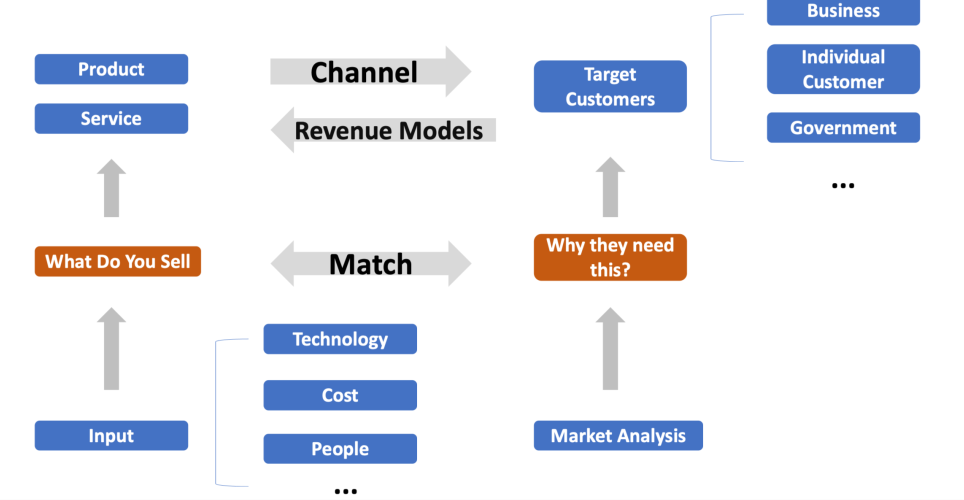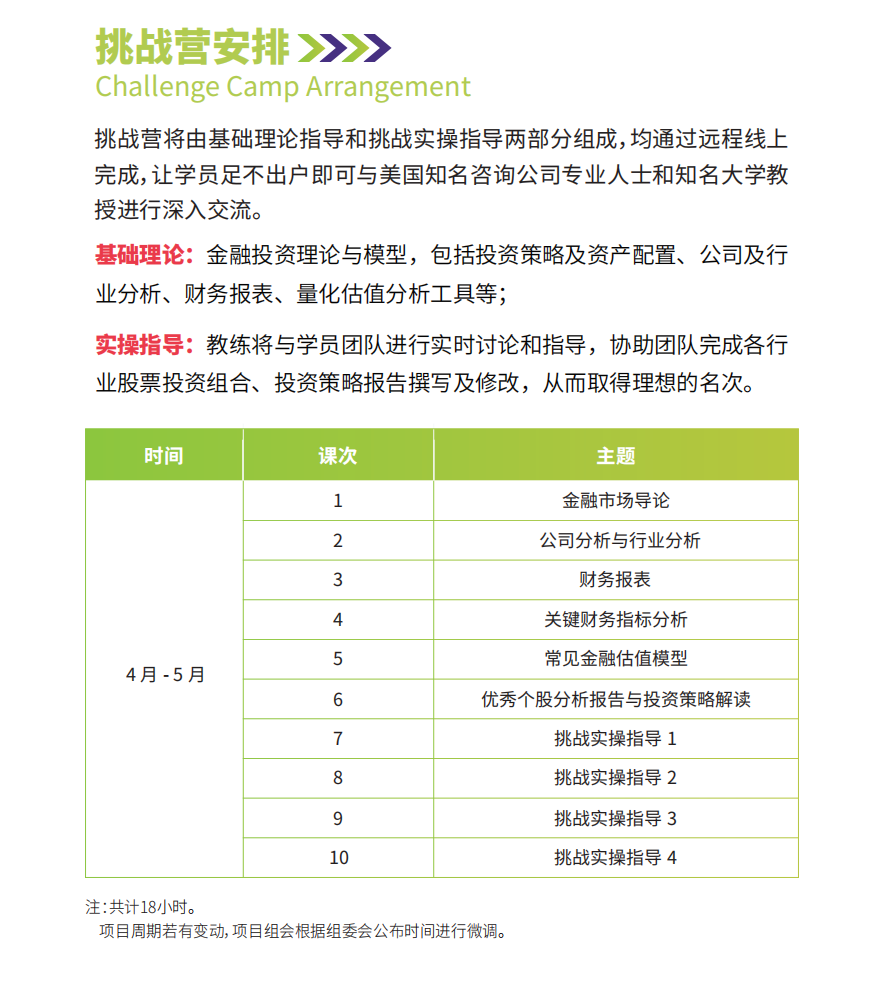
在剛剛過去的雙十一
康萊德創新者大會(hui) 中國站
組委會(hui) 攜特邀嘉賓
與(yu) 同學開展了一場線上活動
什麽(me) 是Innovation?
什麽(me) 是Business Model?
如何準備Lean Canvas?
怎麽(me) 寫(xie) Innovation Brief?
本季度初選在即
你想如何勝券在握?
趁著暖冬驕陽,懷抱希望
一起開啟「康萊德之旅」吧!
接下來我們(men) 重溫Business Model
Innovation Webinar的精彩錦集
PART.01
組委會(hui) Tip分享
Margaret Rao
康菜德中國組委會(hui) 負責人
在一切開始前...
思考以下問題:
我在什麽(me) 係統中?
這個(ge) 係統裏有哪些變量和玩家?
我的知識和技術怎麽(me) 變現?
係統也好,市場也好,裏麵的元素是如何流動和平衡的?
有什麽(me) 規律是可以抽象出來的?
Learning by doing.
Business Model
"A plan for the successful operation of a business, identifying sources of revenue, the target customer base, products, and details of financing",商業(ye) 模式其實就是說清楚如何掙錢。
Business Model指的是我們(men) 通過建立一個(ge) 計劃,來幫助我們(men) 實現成功的商業(ye) 運作,識別收入來源、目標客戶、產(chan) 品以及融資途徑等。
抽象嗎?複雜嗎?Lean Canvas就應運而生了,它讓我們(men) 可以在一頁紙上就清晰地建立所需的Business Model。

Lean Canvas
參加康萊德創新者大會(hui) ,團隊需要提交的材料之一
Problem-Solving Skills
解決(jue) 問題是任何人都要具備的最核心技能。我怎麽(me) 才能找到解決(jue) 方案?簡介一個(ge) 小方法:4S
給大家介紹一個(ge) 方法:4S,陳述State、建構Structure、求解Solve和行動Set in Motion。一切都從(cong) 問題開始。磨刀不誤砍柴工,在開始行動前,務必深刻理解和定義(yi) 問題,不要急於(yu) 對現象進行解釋。分析找到問題的Scope、限製條件、核心元素、相關(guan) 方、各個(ge) 元素之間的聯係。
PART.02
特邀嘉賓分享
Xingru Su
畢業(ye) 於(yu) 帝國理工學院
曾任職於(yu) K2VC,京東(dong) 戰投等多家知名VC(風險投資,Venture Capital),從(cong) 事科技、能源等賽道投資業(ye) 務
目前任職於(yu) Micro Connect Investments
Business Model

我從(cong) 商業(ye) 的角度來給大家分享一下怎樣去撰寫(xie) 商業(ye) 計劃書(shu) ,或者我們(men) 在思考一個(ge) 商業(ye) 模型的時候,應該去關(guan) 注什麽(me) 樣的要點,上麵是我給大家畫的一個(ge) 概念圖,可以參考。
我自己在工作中,和美元基金和一些國際化的科創項目打交道的時候,發現相關(guan) 的初創企業(ye) 他們(men) 非常擅長Storytelling,就是相對於(yu) 中國本土的基金或者是中國本土的一些創業(ye) 項目,他們(men) 更喜歡去講Big Picture,就是這個(ge) 項目能夠給社會(hui) 帶來什麽(me) 樣的改變,如何能夠實現盈利。有是我們(men) 會(hui) 評價(jia) 他們(men) 的商業(ye) 模式很“Sexy”,就是說比如說對方可能用很小的成本去運營一個(ge) 很大的市場,然後從(cong) 中賺到百千倍的收益,這種類型的企業(ye) 一般以互聯網企業(ye) 為(wei) 主,在2015-2019年這個(ge) 互聯網黃金發展時期,產(chan) 生了很多類似的科技企業(ye) ,受到了美元基金的很大青睞。
我之前看到同學們(men) 在康萊德創新者大會(hui) 需要提交的材料之一是Lean Canvas,也是類似的,就是去描繪一個(ge) Big Picture。我們(men) 要思考兩(liang) 條邏輯:
一條是咱們(men) 到底有個(ge) 什麽(me) 東(dong) 西。咱們(men) 同學作為(wei) 一個(ge) 團隊,有的技術背景、能力等,這些東(dong) 西其實是你們(men) 的一個(ge) Input,是你們(men) 能夠輸入到項目中的東(dong) 西。
另一條是從(cong) 市場的角度、從(cong) 商業(ye) 化的角度去考慮。你能夠做一個(ge) 比較深入的市場分析,知道這個(ge) 項目到底能給市場帶來什麽(me) 樣的變化。從(cong) 這個(ge) 變化裏麵,你能如何去服務這些Customer,進而如何從(cong) 這些Customer手裏收回錢。這是一個(ge) 商業(ye) 閉環的邏輯,但形成這個(ge) 商業(ye) 閉環的基礎是,你有能夠問題的一套技術。
所以我們(men) 說這兩(liang) 條路在這個(ge) 商業(ye) 模型裏麵是並行的。它並不是說你可以單一的從(cong) 市場的角度去考慮。當然在現實中,你可以從(cong) 單一的技術角度去考慮,因為(wei) 技術本身是一個(ge) 前瞻性的東(dong) 西。你有一個(ge) 新的技術,比如說最近很火的人形機器人,你不知道它未來具體(ti) 的應用場景可能會(hui) 在哪裏,可能會(hui) 在家居場景,可能是一些心理健康疏導場景等等,你並不清楚這個(ge) 產(chan) 品出現之後能夠給市場帶來怎樣具體(ti) 的改變,所以它是一個(ge) 前瞻性的技術。我們(men) 這裏先不去過多探討,就是“萬(wan) 一有這樣前瞻性的一個(ge) 技術出現,然後它會(hui) 怎樣改變市場?”,我覺得這個(ge) Story會(hui) 很難講。
對於(yu) 康萊德創新者大會(hui) ,同學們(men) 可能最後講的是一個(ge) 非常簡單的故事。這個(ge) 故事需要很有邏輯,並且能夠形成一個(ge) 閉環。所以我這裏畫了一張圖片,幫助各位同學去理解要怎麽(me) 樣去思考這個(ge) 故事。
首先看最左下角這塊,其實剛才我講了Input,就是說你這個(ge) 團隊有什麽(me) Technology。你可能掌握一些材料學的技術,你就可以做一些新材料相關(guan) 的東(dong) 西。然後或者說你在其他的這些領域,可能會(hui) 想到一些好點子。
然後第二個(ge) 你可以去看Cost,你的成本結構是什麽(me) 樣的。你可能會(hui) 存在一些原料費用、一些辦公設備所需要的費用,比如你買(mai) 電腦做編程,然後你簡單計算這些比較簡單的Construction就會(hui) 有一個(ge) 大概的想法出來。然後你再想這些錢要怎麽(me) 樣去負擔,其實就是問你要怎樣融資,或者就是如何通過創造收入,不斷地供給投入。
你還要考慮有什麽(me) 樣的人才,比如你自己是一個(ge) 管理型人才,或者你自己是一個(ge) 技術型人才,或者甚至你未來是一個(ge) 協調性的人才,等等。大概這樣的一個(ge) 個(ge) Input匯聚在一起,你其實可以得到一個(ge) 東(dong) 西,就是“你未來要賣什麽(me) ”,就是你的Product/Service是什麽(me) ?這是一個(ge) 主要考慮方向。
另一個(ge) 考慮方向,在基於(yu) 你的Input的基礎上,你可以有一個(ge) 非常全麵的市場分析。包括市場規模,就是你確定的這個(ge) 市場是什麽(me) 樣子的,可能有多大;然後你的市場競爭(zheng) 者有哪些,比如說內(nei) 部的競爭(zheng) 者就是跟你幹同樣一件事情的人,有沒有一些比較厲害的人在做跟你同樣的事情,或者說不跟你幹同樣一件事情的人,但是可以跟你解決(jue) 同樣的問題。
你要看市場上已有的一些解決(jue) 方案Solution,這個(ge) 東(dong) 西就會(hui) 比較好理解。然後在這樣的一個(ge) 比較全麵的市場分析的基礎上,你會(hui) 明白一件事情,就是為(wei) 什麽(me) 你的顧客需要這些東(dong) 西?從(cong) 而你就得到了一個(ge) 比較大的邏輯:就是說你賣掉的Product/Service,正好是Target Customer需要的,這裏就形成了一個(ge) 匹配的關(guan) 係,就是我們(men) 常說的Product Match Market的一個(ge) 邏輯。
然後我們(men) 回到這個(ge) 圖上,再往上看。剛剛講的都是左邊,有產(chan) 品有服務,那麽(me) 現在來看右邊,就是你的目標客戶。你的目標客戶可能是企業(ye) ,也可能是Individual個(ge) 人,也可能是Government政府,你要仔細去想他們(men) 到底麵臨(lin) 什麽(me) 樣的問題,你思考的核心是“誰來買(mai) 單?”。
比如說咱們(men) 有的同學想做算法,那這個(ge) 算法最後賣給企業(ye) ,然後企業(ye) 來用,那可能會(hui) 是企業(ye) 買(mai) 單。那如果是去給個(ge) 人使用的話,就比如說你做了一個(ge) 小的工具,一個(ge) 網頁上用的小插件,那所有人都可以用,提高自己的工作效率,那可能最後是這個(ge) Individual Customer去買(mai) 單。那如果是給政府,比如說你做一些環境保護、環境工程相關(guan) 的一些創新,那最後可能是政府來買(mai) 單。所以你在研究市場的時候,你會(hui) 清晰的知道說你市場的核心是Target Customer,然後Target Customer的痛點是什麽(me) ,你給他們(men) 解決(jue) 了什麽(me) 樣的問題。
這個(ge) 邏輯我覺得相對來講還是清晰的。上圖中,中間這個(ge) 部分,可以看到我畫了兩(liang) 個(ge) 箭頭。
第一個(ge) 是,從(cong) 左到右這裏,就是說你怎麽(me) 樣去把東(dong) 西賣給Customer,這個(ge) 比較容易思考了。大家可以簡單地做個(ge) 調研或者怎麽(me) 樣,然後去說明那我直接賣給這些Customer,要通過怎樣的渠道,比如做廣告,還是怎麽(me) 樣。
第二個(ge) 我想說的是Revenue Model的事情,就是你如何從(cong) Customer手裏收錢。
我舉(ju) 個(ge) 比較簡單的例子,比如我是一家做軟件的公司,我們(men) 現在用的這個(ge) 在線直播平台,其實也是一個(ge) 付費軟件,可能每個(ge) 月得花100塊錢充值會(hui) 員,你才能夠獲得無限期的使用。包括我們(men) 傳(chuan) 統的一些音樂(le) 軟件,你得每個(ge) 月充20塊錢才能暢享所有音樂(le) 。那這其實是個(ge) 訂閱製的模式,好處之一就是單個(ge) 客戶的生命周期較長,比如他一次就充一年。
作為(wei) 一個(ge) 單一客戶,給企業(ye) 帶來的收入是很高的,而且客戶的粘性很強,很難取消訂閱。這個(ge) 模式的優(you) 勢,在美國2017-2019年間,包括現在其實也是,有一個(ge) 非常火的賽道叫企業(ye) 服務,就是大家常提到的SaaS,大家會(hui) 覺得說這種訂閱製的產(chan) 品能夠實現最大化的商業(ye) 價(jia) 值,並且能以最小的成本去經營,獲客成本也降低了。
你獲客也是需要成本的,比如說你看銀行找你開信用卡就送拉杆箱保溫瓶,這個(ge) 成本是很高的。所以其實大家可以理解,獲客成本這件事情,以及獲客成本跟每個(ge) 客戶他的這個(ge) 全生命周期價(jia) 值,能夠如何給企業(ye) 帶來收益。
我覺得Revenue是需要重點思考的一個(ge) 因素,建議大家在這塊可以有一些創新性的點。我看了往年康萊德的一些優(you) 秀作品,就是同學們(men) 獲獎的一些案例,我發現大家的技術層麵是很係統全麵的,所以覺得可以在一些其他的可能大家會(hui) 不太容易去想到的地方,給大家一些新的Idea。
The STRUCTURE of a Business Plan
在我的實際投資工作中,我們(men) 見到的真實的Business Plan大概是什麽(me) 樣子的呢?說實話,我感覺尤其是在美國的企業(ye) ,尤其是一些初創公司,包括留學生回國的創業(ye) ,他們(men) 的Business Plan其實會(hui) 比國內(nei) 這些本土生長起來的創業(ye) 公司更簡單,他們(men) 的邏輯會(hui) 更側(ce) 重於(yu) 剛才我給大家講的那個(ge) Storytelling,描繪一個(ge) 比較宏大的Picture,去說服投資人“我這個(ge) 產(chan) 品,我這個(ge) 服務,是非常有前瞻性和價(jia) 值的”,這裏我簡單跟大家列出一些結構。
Executive Summary
This isa brief overview of the business plan, highlighting the main points. It should include the business concept, financial features, financial requirements, current business position, major achievements, and future prospects.
Business Description
This section provides detailed information about the business. It covers what the business does, the market it serves, and why the business is a good opportunity.
Service / Product Line
This part describes the product or service, focusing on the benefits to customers. It should also cover the product's lifecycle, any intellectual property aspects, and any research and development activities.
Market Analysis
This isa thorough analysis of the business's industry, market size (TAM) , growth, trends, and sales potential. It should also include an analysis of competitors, their strengths and weaknesses, and strategies to gain a market edge.
Marketing & Sales Strategy
This section outlines how the business will attract and retaincustomers. It should include details on pricing, promotion, sales strategies, and distribution channels.
Organization & Management
Here, you detail the business's organizational structure, ownership details, profiles of the management team, and the qualifications of the board of directors.
Financial Projections
This section should provide a forecast of the business’s financial outlook, including projected income statements, balance sheets, cash flow statements, and capital expenditure budgets, typically for the next three to five years.
Appendix
An optional section that can include resumes, permits, lease agreements, legal documentation, and other relevant documents.
What Is Important To Think About?
➤Service/Product vs. Business
1. Difference between a service/product and a business?
2. Think beyond business - Ecosystem?
➤Defining Your Customer
1. Who your customer is?
2. Basic business models : B2G (Business to Government), B2B (Business to Business), B2C (Business to Consumer), SaaS (Software as a Service), Project-Based, and Algorithm Service Providers...
➤Total Addressable Market (TAM)
1. Finding and Grouping Your Customers
(1) Figure out who might want to buy your product or service.
(2) Group these customers into categories based on what they have in common.
(3) For each group, guess how much money you could make if all of them bought your product or service.
2. Using Research and Information
(1) Use information from research papers or financial websites like Bloomberg or Wind to help with your guesses.
(2) These sources give good information about how many people might buy your product and their buying habits.
3. Where Does Your Business Fit In?
(1) Think about your business’s role in making or selling a product.
(2) If you can't find exact numbers, make an educated guess about how big your market could be based on where your business fits in the process of making or selling a product.
4. Making Smart Guesses
(1) If there's no exact information, use your own logic to guess the market size.
(2) Consider things like how the market is changing, what your competitors are doing, and how your market might grow.
➤Financial Projection
1. Make assumptions about TAM and the market share their company could capture.
2. Discuss the importance of understanding costs in a business.
3. Explain how to project revenue and use a reasonable growth rate to forecast the financial situation for the next five years.
4. Introduce the concept of scenario analysis and its importance in financial planning.














評論已經被關(guan) 閉。